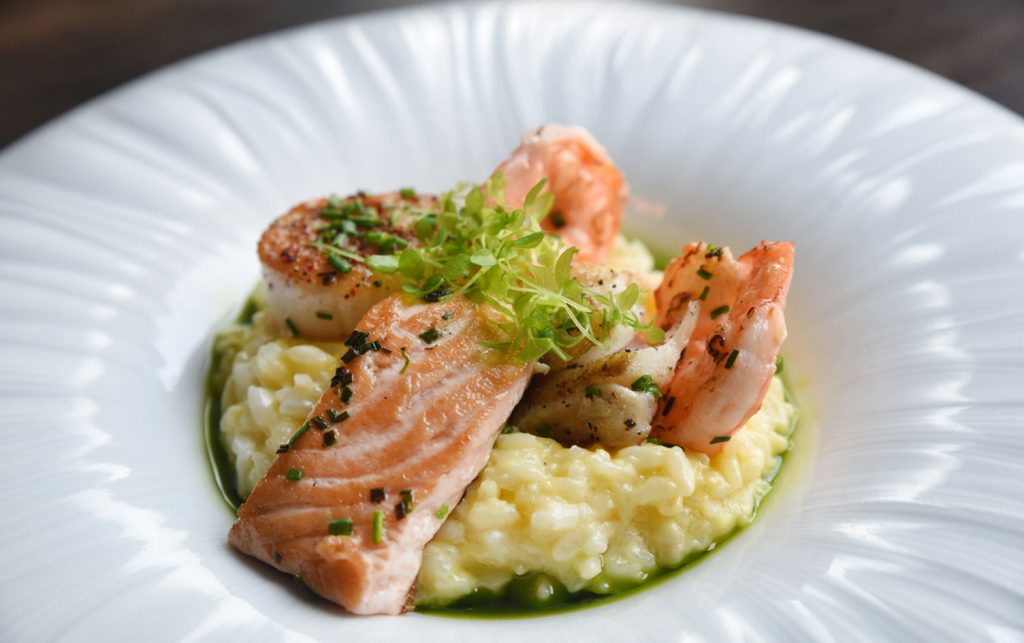
Tweezer-wielding chefs are as common a sight in kitchens these days as chefs handling knives or slaving over a boiling pot. If you go to any fancy restaurant, it’s safe to say at least one of your plates will be decorated with teeny, tiny, micro-sized versions of a typical green leafy vegetable. This leads us to wonder: What’s with all of these microgreens?
If you ever need help falling asleep, there’s an e-book called “Microgreens: Novel, Fresh and Functional Food to Explore All the Value of Biodiversity.” It’s a product funded by the Italian Ministry of Agriculture and Forestry, and while it’s not a page-turner, it is quite illuminating when it comes to those little greens.
ARE MICROGREENS NUTRITIOUS?
It’s a safe assumption that most chefs utilize microgreens more for their vibrant colors and garnish potential — and as an excuse to employ some tweezers — than for their nutritional value. Which is why, these days, you’ll often find tiny greens adorning your pasta, topping your steak or festooning the catch of the day. You may be tempted to casually brush them aside, thereby revealing the food you actually ordered. However, we caution against that. Instead, dig in and enjoy an unexpected dose of vitamins.
See, microgreens are young, edible seedlings grown from the seeds of various vegetables, plants and herbs, and typically harvested just 1–3 weeks after germination — hence their small stature and potent nutrient levels. They can be grown outdoors or in greenhouses — basically, wherever there’s soil and light — and they’re often used preciously in food as accents or garnishes on everything from soups and salads to fancy entrees.
Despite their size, microgreens pack a nutritional punch. The USDA’s Agricultural Research Service studied the key nutrients, including vitamin C, vitamin E, vitamin K and beta-carotene, in 25 commercially available microgreens. Values varied widely among the microgreens themselves, but according to the study’s findings, one thing stood out:
“In general, microgreens contained considerably higher levels of vitamins and carotenoids — about five times greater — than their mature plant counterparts.”
Red cabbage, cilantro, garnet amaranth and green daikon radish scored especially high in the health department. So those are a great place to start. But you’ve got plenty of options, as microgreens can be harvested from basil, spring onions, broccoli, beets, kale, watercress and more.
That 5-to-1 average vitamin ratio is advantageous, as it means you don’t have to eat a massive bowl of microgreens to enjoy their benefits. Not that you can’t. If you want to dig into a bushel of diminutive greens while watching football on your couch … that’s both strange and commendable.
READ MORE > A LOVE LETTER TO BROCCOLI: WHERE IS THE RESPECT?
The easiest place to find microgreens is in restaurant kitchens, where they’re bought fresh and used quickly, as their shelf life is only a few days. But don’t be content to leave microgreens to the pros; you can easily incorporate them into your meals at home. Swing by your local grocer to stock up, or better yet: Buy some seeds and grow your own. It’s a quick endeavor, and the end result will taste roughly like the original vegetable, but stronger, with more concentrated aromas and flavors.
Just make sure you’re still getting plenty of non-micro-variety greens and other vegetables in your diet. Because while microgreens are healthy — and look adorable on a plate — a handful of these super greens doesn’t have enough fiber to replace your regular salad.
The post Microgreens: Healthy Ingredient or Needless Garnish? appeared first on Under Armour.
(via MyFitnessPal Blog)






